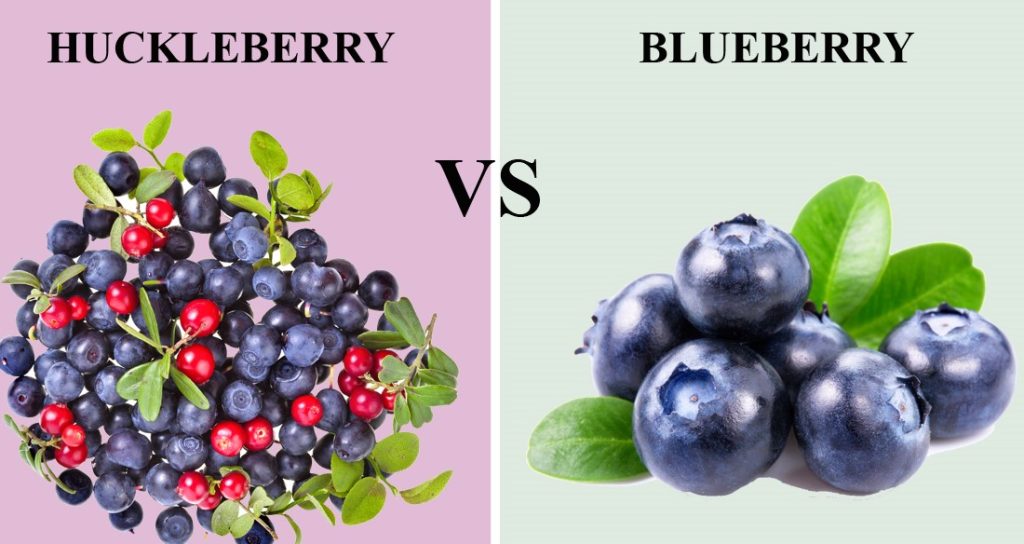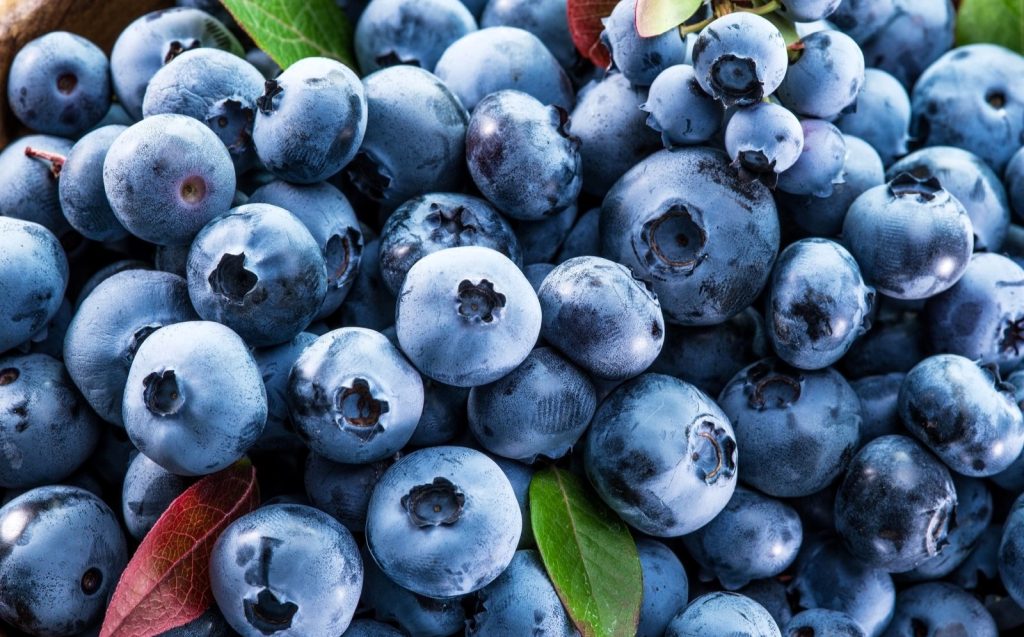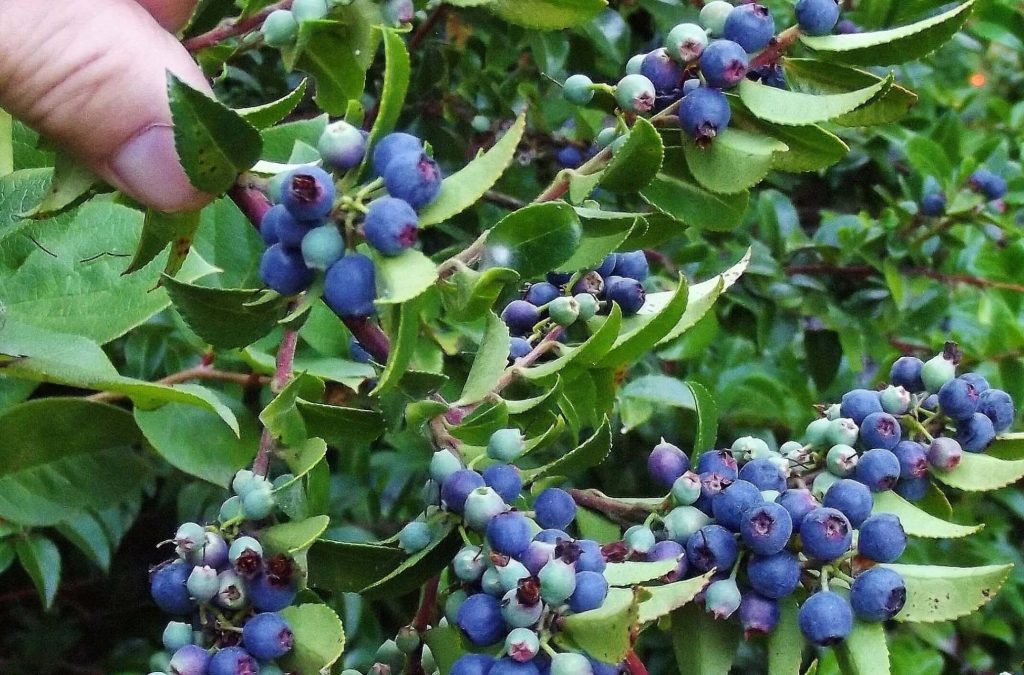Huckleberry vs. Blueberry: What’s the Difference?
Welcome to the berry debate of the season, where we dive deep into the world of Huckleberries and Blueberries, two delectable fruits that often create a delicious dilemma. These nutrient-packed berries may look similar at a glance, but as we peel back the layers, you’ll find a world of difference in taste, culinary applications, and health advantages. Whether you’re a health enthusiast comparing their nutritional benefits, a baking aficionado pondering which will make your pastries shine, or simply curious about incorporating these berries into your cooking repertoire, this post is your guide. Join us as we explore the unique characteristics of huckleberries and blueberries, uncover their health benefits, and provide inspiration for your next berry-infused creation. Get ready to become a berry expert, one juicy fact at a time!
Huckleberry and Blueberry: What’s the Difference?

When meandering through the produce aisle, one may easily confuse the huckleberries with their famed relatives, the blueberries. These small, delectable fruits share a striking resemblance in hue and form, tempting many to ponder their distinctive characteristics. A notable distinction lies within their lineage; blueberries are part of the genus Vaccinium, which includes cranberries and lingonberries, whereas huckleberries belong to the genus Gaylussacia. This taxonomic difference gives rise to certain botanical features that can help keen observers distinguish one from the other.
Delving deeper into their characteristics, the huckleberry’s seeds are notably more prominent, offering a crunchy texture that contrasts the smaller, softer seeds of blueberries. Furthermore, huckleberry fruits bear a varied spectrum of colors, from red to blue to black, depending on the specific species. On the other hand, blueberries typically present a uniform deep blue or purple shade, resulting from a compound called anthocyanin, which not only provides the berry’s color but also contributes to its famed antioxidant properties.
In terms of cultivation, blueberries are widely known for their commercial availability, thriving in both wild environments and cultivated farms. They have been selectively bred for size, sweetness, and yield, making them a staple in various markets around the world. In stark contrast, huckleberries remain more elusive, seldom domesticated and predominantly harvested from their natural habitats, which adds an element of rarity and wildness to their appeal. The difficulty in growing huckleberries on a commercial scale further accentuates the distinctions between these close botanical cousins.
Perhaps the most important difference for consumers and culinary enthusiasts lies in the taste profile of these berries. While both huckleberries and blueberries can boast their own sweet and tart dimensions, huckleberries often exhibit a more intense, bold berry flavor, which can lend a unique twist to traditional berry recipes. Although blueberries are commonly celebrated in desserts and healthful snacks, those fortunate enough to sample huckleberries will discover a complex, tangy flavor that can elevate an array of culinary endeavors, from rustic pies to fine dining sauces.
Huckleberry vs. Blueberry: Key Differences
1. Availability
- Huckleberries: Primarily found in the wild in states like Washington, Oregon, and Alaska. They are rarely available in grocery stores and are challenging to domesticate.
- Blueberries: Widely available both in the wild and in grocery stores. They are easier to cultivate and can be grown in home gardens.
2. Growth Pattern
- Huckleberries: Grow as individual berries on the bush.
- Blueberries: Grow in clusters, leading to a higher yield per bush.
3. Interior Color
- Huckleberries: Blue or purple inside.
- Blueberries: Pale green or white inside.
4. Seeds
- Huckleberries: Contain hard seeds, which can be bitter.
- Blueberries: Have softer, tiny seeds.
5. Taste
- Huckleberries: Taste varies by species; red varieties are tart, while darker ones are sweeter.
- Blueberries: Generally sweet, with lowbush varieties having a more intense flavor.
Nutritional Benefits: Comparing Huckleberries and Blueberries
When diving into the world of juicy berries, the nutritional benefits of huckleberries and blueberries are ripe for comparison. Both berries are hailed for their healthful properties, packed with antioxidants and vitamins essential for well-being. However, a detailed look at their nutritional profiles reveals subtle but intriguing differences. While blueberries are renowned for their high levels of vitamin C and dietary fiber, huckleberries parry with their own repertoire of mineral content, including potassium and iron, which may not be as prominent in blueberries.
The antioxidant capacity of these berries is often a highlight of the health-conscious community, and for good reason. Antioxidants play a crucial role in neutralizing free radicals, rogue molecules that are implicated in aging and various diseases. Huckleberries are not to be underestimated in this antioxidant arena, boasting significant amounts of anthocyanins, the pigments that give them their vibrant color. Blueberries, on the other hand, command attention with their own array of anthocyanins and flavonoids, which have been studied extensively for their positive effects on heart health and cognitive function.
While both berries contribute to a healthy diet, comparing their vitamin and mineral content paints a picture of distinctive benefit profiles. Blueberries come forward with a more concentrated source of vitamin K and manganese, nutrients that are key to bone health and metabolic processes. Meanwhile, the robust huckleberry does not shy away, with a commendable vitamin A content, supporting vision and immune function. These variances in nutrient concentration allow both berries to shine in their own right when incorporated into a balanced diet.
In examining the nutritional benefits of huckleberries versus blueberries, it becomes clear that each contributes uniquely to health and nutrition. Whether opting for the tartness of a huckleberry or the sweet succulence of a blueberry, adding these nutritional powerhouses to one’s diet can support a range of body functions from maintaining healthy skin to bolstering the immune system. Thus, when chosen according to personal preference or specific health goals, both huckleberries and blueberries are excellent choices to enrich one’s dietary landscape with a splash of color and a bounty of health benefits.
Baking with Huckleberries and Blueberries: Which is Better?
When pondering the merits of baking with huckleberries versus blueberries, one must consider both the subtle and pronounced differences between these two fruits. The huckleberry, with its bold and tart flavor, can bring a distinctive taste to any baked good. The small bursts of tangy juiciness provide a delightful contrast in textures and flavors, especially when contrasted with the sweeter, almost floral notes of a blueberry.
In terms of baking performance, both berries possess attributes that can enhance a variety of desserts. Huckleberries, dense and robust, tend to hold their shape and impart a more intense berry flavor, ideal for creations where a strong fruit presence is desired. On the other hand, blueberries, known for their versatility, can complement other ingredients without overpowering them, and their skins often create a desirable, appealing coloration for muffins, scones, and pies.
The decision on whether huckleberries or blueberries are better for baking may also hinge upon availability and seasonality. Huckleberries are often wild and not as widely cultivated or available as blueberries, which could affect their consistency from batch to batch, though they are treasured for their unique taste. Blueberries are readily available, both fresh and frozen, making them a more convenient option for consistent baking results year-round.
Ultimately, choosing between baking with huckleberries or blueberries comes down to personal preference and the desired outcome of the baked dish. Whether opting for the intense, wild flavor of huckleberries to make a dessert stand out, or the reliably sweet and familiar taste of blueberries to please a crowd, both berries offer their own unique set of characteristics that can be skillfully harnessed to create truly remarkable and delicious baked goods.

Health Benefits: Huckleberries vs Blueberries
Delving into the realm of superfruits, one often encounters the deeply-colored duo of huckleberries and blueberries, each packed with their unique blend of nutrients and health benefits. While both berries are recognized for their antioxidant properties, huckleberries distinguish themselves with their slightly more tart flavor and a higher concentration of certain vitamins and minerals, thus positioning them as a contender for those seeking to optimize their dietary health.
When one dissects the nutritional profile of blueberries, a bounty of health benefits emerges; they are lauded for being rich in vitamin C, vitamin K, and manganese. Moreover, the robust antioxidant capacity of blueberries, primarily attributable to the presence of anthocyanins, aids in neutralizing harmful free radicals, contributing to reduced inflammation and a lower risk of chronic diseases such as cardiovascular ailments and certain forms of cancer.
Turning our attention to huckleberries, these jewels of the wild often contain higher quantities of the antioxidant known as quercetin, and they offer an impressive arsenal of potassium, iron, and vitamin B6. While they share many properties with their blue-hued cousins, huckleberries have been celebrated in indigenous medicine for their supposed capabilities to fortify the immune system and support heart health, making them a fruit that not only tantalizes the taste buds but also strengthens the body’s defenses.
In the perennial debate of huckleberries vs blueberries, what stands uncontested is that incorporating either of these berries into one’s diet can bestow a multiplicity of health benefits. However, huckleberries, with their slightly more diverse mineral profile, may edge ahead slightly for those seeking a boost in specific nutrients. Regardless, be it through a gleaming bowl of fresh berries or a smoothie enriched with their essence, both huckleberries and blueberries are exceptional additions to a health-conscious lifestyle.

Culinary Uses: Exploring Huckleberry and Blueberry Recipes
When diving into the culinary uses of huckleberries and blueberries, one stumbles upon a plethora of delightful recipes that boast a unique intermingling of flavors and textures. Evaluating the distinctive qualities of each berry within the gastronomic realm, chefs and home cooks alike discover that huckleberries impart a vibrant, tart burst to dishes, fostering a culinary expedition that’s as tantalizing as it is nutritious. The intertwining of these berries in various recipes opens up a gateway to an enriched experience for the palate, inviting an adventurous twist to traditional berry dishes.
As we survey the landscape of berry-infused delicacies, we uncover that the huckleberry, with its robust and slightly wild tang, is impeccably suited for rustic desserts such as cobblers and crisps; these preparations allow the huckleberry’s distinctively bold flavor to take center stage. Gastronomists who brave the use of huckleberries in their cooking are often richly rewarded, as these berries elevate the sensory experience of the diner, leaving a lasting impression marked by the unmistakable essence of the wilderness from whence they came.
Contrariwise, the blueberry is a versatile culinary player, gracefully transitioning from sweet applications, like muffins and pancakes, to savory concoctions, including salads and reduction sauces that accompany a variety of proteins. The somewhat more subdued sweetness and mellow tartness of blueberries make them a universally adored ingredient, capable of subtlety enhancing the flavor profile of a dish without overwhelming the senses. It is this delicate balance that permits the blueberry to seamlessly intertwine with a multitude of ingredients, a testament to its culinary versatility.
Moreover, the adventurous cook who opts for a harmonious blend of huckleberries and blueberries in a single creation forges a complex tapestry of flavor that can truly be described as greater than the sum of its parts. Whether it’s through jam-making, where the marriage of berries creates layers of depth, or a simple fruit salad, where the juxtaposition of tart and sweet dances on the tongue, the use of both berries in tandem promises a euphoric journey for the taste buds, embodying the epitome of summer’s bountiful essence.
Frequently Asked Questions
What are the main differences between huckleberries and blueberries?
Huckleberries and blueberries are both small, round berries but they differ in several ways. Huckleberries are usually smaller, have a more intense color and a thicker skin, while blueberries tend to be larger with a lighter color and a smooth skin. Taste-wise, huckleberries are often tarter and more flavorful, whereas blueberries are sweet with a more subtle flavor. Additionally, they belong to different species within the same family and their bushes also have distinct appearances.
How do the nutritional benefits of huckleberries and blueberries compare?
Both huckleberries and blueberries are packed with nutrients, including antioxidants and vitamins. Blueberries are well-known for their antioxidant levels, particularly anthocyanins, which are responsible for their blue color and have health-protective effects. Huckleberries also contain these antioxidants, but in different proportions. While the two berries share many nutritional benefits such as fibers, vitamins C and K, and manganese, the exact quantities may vary between them which can make one more favorable depending on dietary needs.
Is there a preferred berry between huckleberries and blueberries for baking?
The choice of whether to bake with huckleberries or blueberries often comes down to personal preference and desired flavor. Blueberries are commonly used in baking because they’re sweet, widely available, and hold their shape well. Huckleberries have a more robust flavor, which can enhance the taste profile of baked goods, but they may be harder to find. Both can be used interchangeably in recipes; however, due to their tartness, huckleberries might require a bit more sugar.
What are some health benefits of eating huckleberries compared to blueberries?
Huckleberries share many of the health benefits of blueberries, such as being high in antioxidants which can help combat oxidative stress in the body. They both promote heart health, improve brain function, and may protect against certain types of cancer. However, huckleberries are sometimes prized for their higher content of certain antioxidants and their lower sugar content, making them a potentially better option for those monitoring sugar intake.
Can you use huckleberries and blueberries interchangeably in recipes?
Yes, huckleberries and blueberries can often be used interchangeably in recipes, especially in things like muffins, pancakes, and salads. Because they are similar in size and texture, they can be substituted on a one-to-one basis. However, due to taste differences, there might be a slight change in the overall flavor of the dish, with huckleberries imparting a bolder taste and blueberries a milder, sweeter one.
Are huckleberries found in the same regions as blueberries?
Huckleberries and blueberries can sometimes be found in overlapping regions, particularly in North America, but they also each thrive in different locales. Blueberries are more widely cultivated and can be found in many regions across the globe. Huckleberries are often found in the Pacific Northwest and mountainous regions and are not as commonly cultivated, making them less accessible in certain areas.
How does the seasonality of huckleberries compare to that of blueberries?
Both huckleberries and blueberries have specific growing seasons, with blueberries typically being harvested from April to September, depending on the region. Huckleberries have a shorter season and are usually harvested from midsummer to early fall. Because blueberries are more widely cultivated, they are often available fresh year-round, while huckleberries are mostly found during their natural growing season or frozen if preserved.



